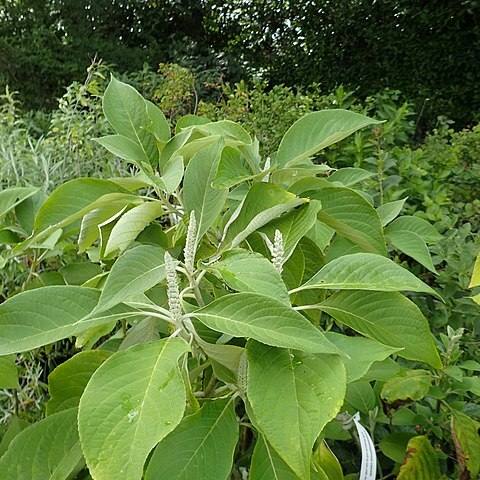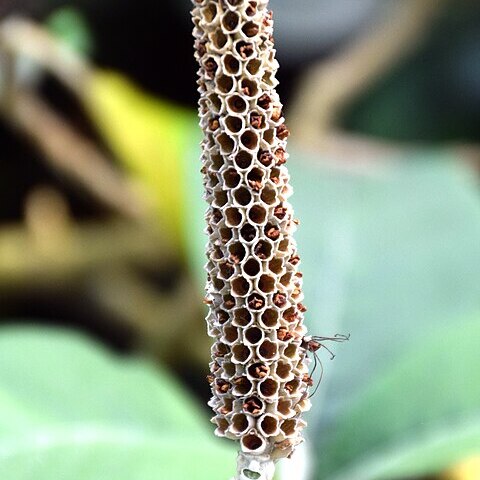Plants 1.5-7 m tall, bark gray-yellow or brown, exfoliating; branches densely gray or yellowish tomentose when young, brownish, puberulent or subglabrous with age. Petiole 1.5-3(-4.5) cm, densely yellowish tomentose; leaf blade elliptic-lanceolate, 10-23 × 5-9 cm, papery, densely gray or yellowish tomentose-stellate/floccose when young, adaxially glabrescent or puberulent on midrib, base cuneate, margin serrate or sometimes crenate, apex acuminate. Spikes 10-13 cm, dense, cylindric, densely stellate-tomentose; verticillasters 6-to many flowered; bracts acute, margin entire or irregularly crenate, deciduous in fruit. Pedicel ca. 1 mm. Calyx 6-8 mm, densely yellowish stellate-tomentose, tuberculate, glabrous inside, teeth to 1.5 mm. Corolla 8-9 mm, stellate-tomentose outside. Nutlets smooth abaxially, with sparse ± transparent tubercles adaxially. Fl. Nov-Mar, fr. Mar-May.
More
A shrub or small tree. It grows to 5 m high. The bark is grey yellow or brown. It peels off. The young branches are covered with a grey or yellow layer. The leaves have stalks. The leaves are 9-25 cm long by 2.5-12 cm wide. They are oval or sword shaped. They taper to the tip and have teeth around the edge. They have dense silvery hairs underneath. The flowers are white or light pink. They occur in dense heads. These are at the ends of branches. They are 10-13 cm long. There are 6 to many flowers. The nutlets are smooth.
A tropical plant. In Nepal it grows between 1000-2800 m altitude. In China it grows in dry, open, waste places between 1000 and 2600 m altitude. In Sichuan and Yunnan.


